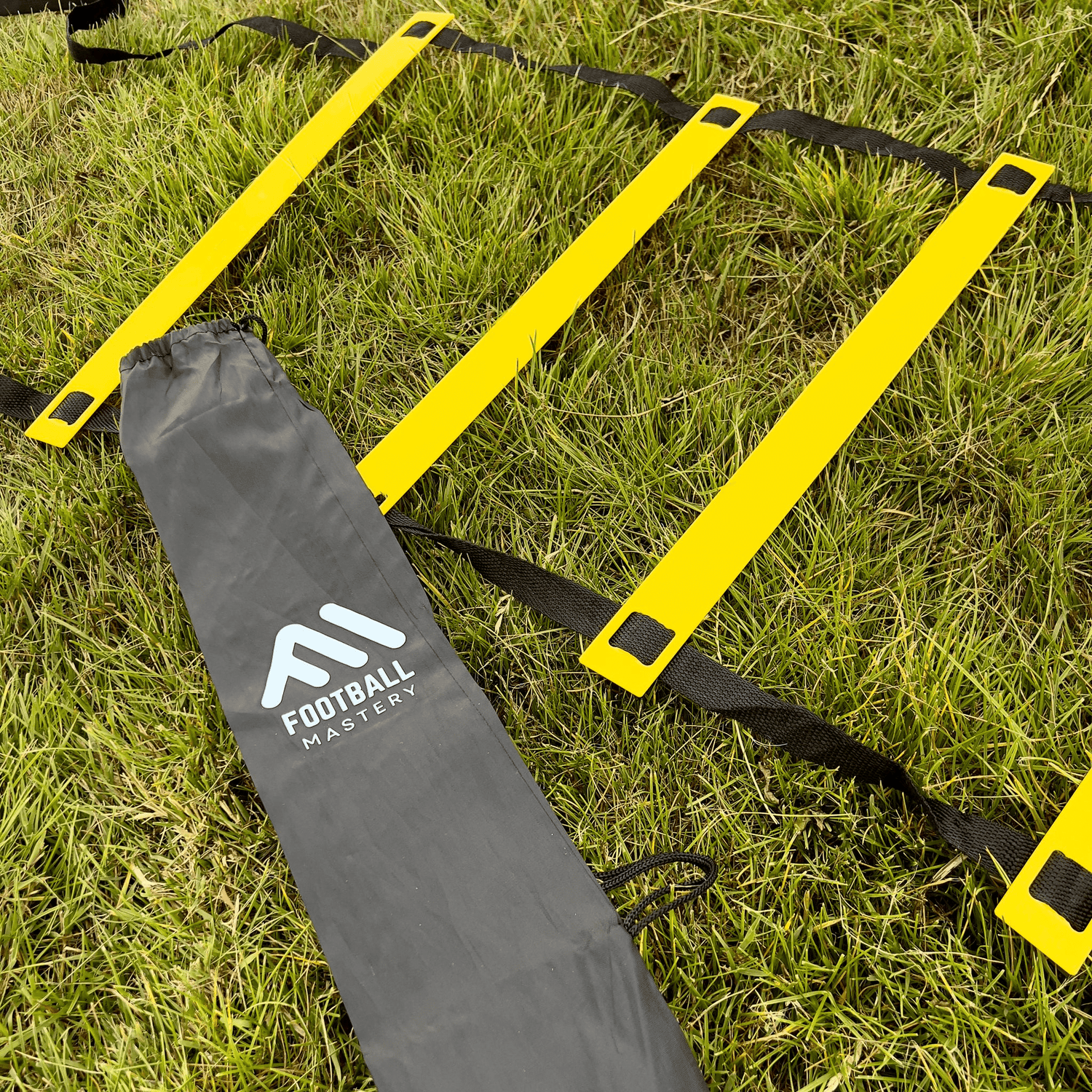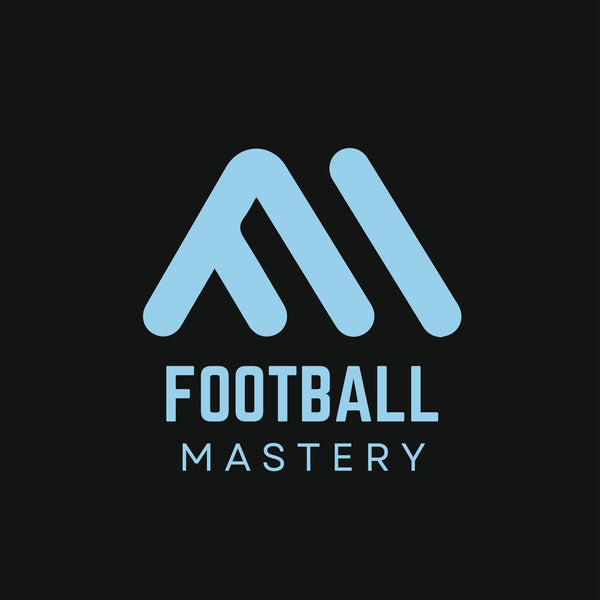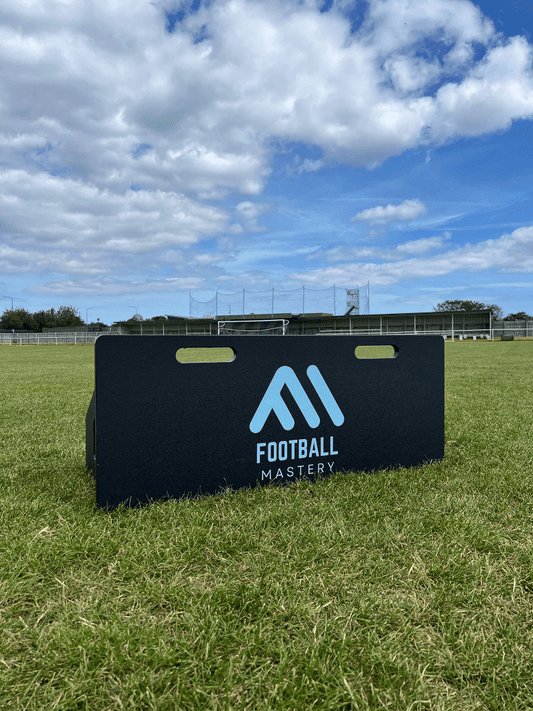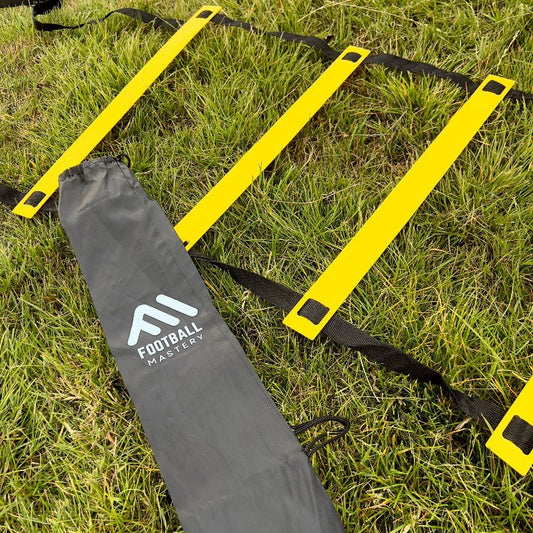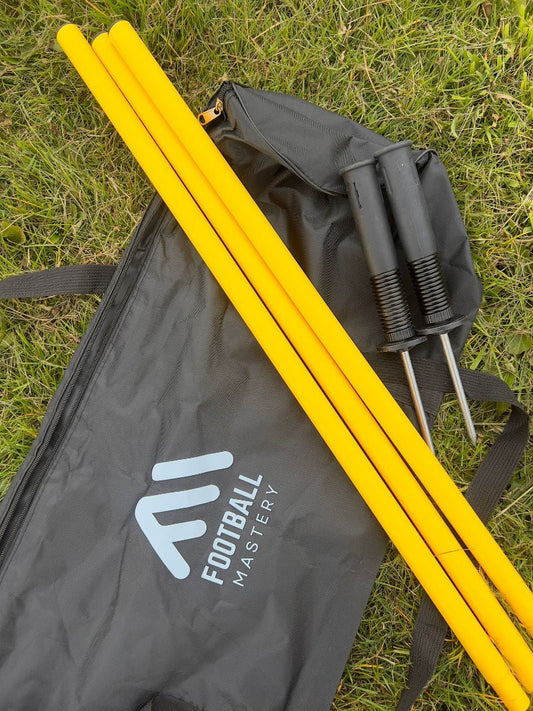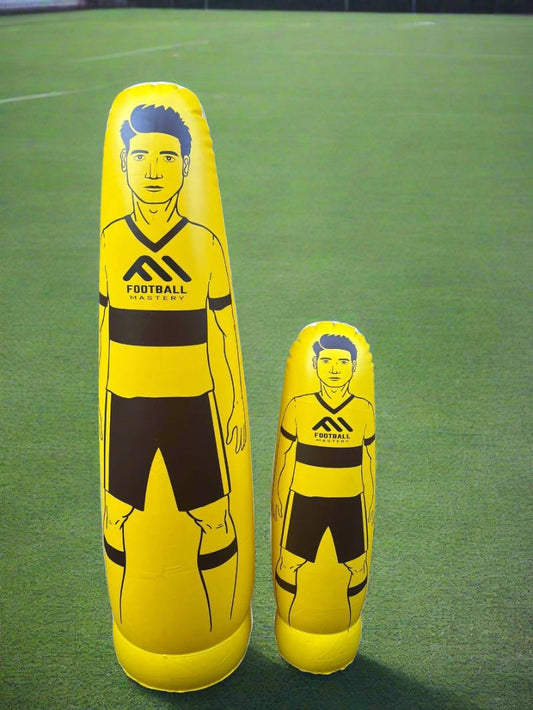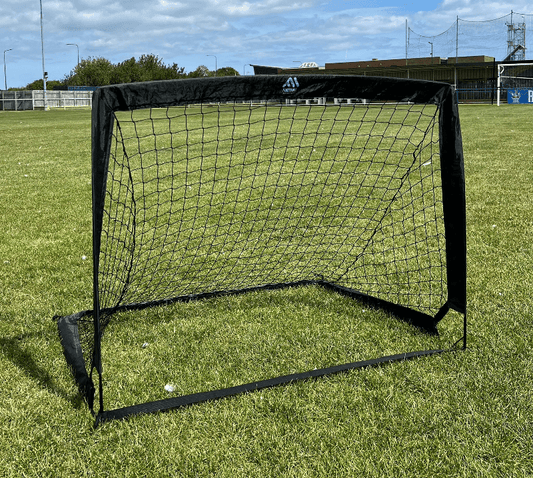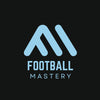
Football Rebound Boards Every Goalkeeper Should Use
Share
Looking to sharpen your reflexes, improve shot-stopping, and become the kind of keeper that attackers dread? Football rebound boards are the secret weapon behind sharper saves and smarter training sessions. In this article, we’ll explore the best types of rebound boards for goalkeepers, how they transform solo sessions into elite-level practice, and what features matter most—like unpredictable rebounds, return speed, and portability. You'll also discover why Football Mastery’s rebound boards are crafted with professional insight, built for versatility, and trusted by keepers looking to boost their reaction time, handling, and footwork—all without relying on a training partner. Whether you're a grassroots player or pushing for academy level, this guide reveals everything you need to make the most of your goalkeeper training.
The Rise of Rebound Boards in Modern Goalkeeper Training
Gone are the days when goalkeepers honed their skills against brick walls and garage doors. Today’s elite-level keepers rely on specialised training tools—like rebound boards—to develop razor-sharp instincts and game-like reflexes in the comfort of their home or training ground.
“A good rebound board doesn’t just bounce the ball back. It mimics unpredictable rebounds, forces split-second decisions, and pushes keepers to train harder, smarter and faster.”
Unlike static equipment, football rebounders create dynamic, real-world ball returns, offering a more realistic way to drill diving practice, shot-stopping, and reflex training. That’s why coaches across all levels—from Sunday League to academies—are integrating them into their goalkeeper programmes.
Why Rebound Boards Are a Must-Have for Every Keeper
While outfield players rely on cones, mannequins and small goals, goalkeepers need something more reactive—something that pushes them into match simulation territory. Enter: the rebound board.
Benefits of Using a Football Rebounder for Goalkeeper Training
-
Enhances reflex speed with unpredictable returns that mimic deflections and ricochets
-
Boosts footwork and lateral movement under pressure
-
Sharpens ball control from close-range situations
-
Builds muscle memory with repetitive, high-intensity training drills
-
Allows for solo goalkeeper practice—no need for a partner
The Football Mastery Rebound Board was designed specifically for these kinds of drills. It’s compact yet powerful, offering adjustable angles to increase rebound variability, allowing keepers to drill different save techniques in one session.
Choosing the Right Rebound Board: Features That Matter
1. Rebound Angle & Return Speed
If your board always sends the ball back the same way, you’ll stop improving fast. Look for adjustable rebounders that can vary the angle of return—these introduce chaos, which is exactly what happens in a real match.
The return speed also matters. A sharp, high-speed rebounder simulates close-range shots or deflected crosses—challenging your reactions and shot-stopping instincts. This makes it ideal for save reaction training.
2. Portability and Durability
If you’re training at home or at multiple locations, your board should be easy to move, quick to set up, and built to last. Portable equipment like our rebound boards collection ensures you can level up your training anywhere—from backyard to full-size pitch.
Look for materials like weatherproof composites, reinforced hinges, and elasticated netting if the board includes a net rebounder component.
Drill Spotlight: Reflex Mastery with a Rebound Board
One of the simplest yet most effective goalkeeper reflex drills is the Quick-Fire Save Series:
-
Position yourself 2-3 metres in front of the board.
-
Toss the ball onto the board from different angles.
-
React and catch or parry the return ball at speed.
To simulate game-like ball return, use a dual-sided rebounder or change the angle every few repetitions. Want to add intensity? Use a friend or coach to throw balls at different speeds. It’s a great way to replicate close-range reflex saves.
If you’re looking to level up further, Football Mastery Bundles offer complete goalkeeper setups that combine rebounders with cones, agility ladders and more—giving you a full suite of training tools in one.
Types of Rebound Boards and Their Purpose in Goalkeeper Training
As goalkeeper demands continue to evolve, so does the training equipment designed to support them. From dual-sided rebounders to handheld rebounders and decline boards, each type offers a distinct advantage depending on what aspect of your game you’re looking to sharpen.
Let’s break down the most impactful types of rebound boards and how you can use them to build world-class goalkeeping ability.
1. Decline Rebounders – For Game-Realistic Ground Saves
The decline rebounder is engineered to recreate the bounce and trajectory of low, deflected shots—just like those tricky scuffed finishes that sneak through legs or take a bobble just before reaching you. For keepers, this means more opportunities to train foot-save techniques, improve low diving positioning, and handle unpredictable rebounds at pace.
"Decline boards teach you to get low, fast—crucial for modern keepers who face split-second ground saves."
These boards are ideal for solo training, where a keeper tosses or rolls a ball onto the decline surface and prepares to react explosively to its return.
2. Handheld Rebounders – Precision Chaos at Your Fingertips
If you're training with a coach, a handheld rebounder brings unmatched versatility. The coach controls the ball's speed, spin, and angle—producing randomised returns that test a goalkeeper’s reflexes, handling, and shot-stopping in unpredictable situations.
This is especially useful for:
-
Close-range reflex training
-
Mid-air catching practice
-
High-intensity warm-ups before matches
Look for lightweight yet durable frames that won’t wear down with repeated impact. Football Mastery’s boards are perfect complements to this type of reactive training environment.
3. Rebound Walls – For High-Speed Passing and Punch Drills
A football return wall or solid rebound board—often crafted from aluminium or high-strength composite—offers a fast, flat rebound. These are excellent for training:
-
Punch clearances
-
One-touch passing
-
Distribution drills (with both feet or hands)
With the rise of the sweeper-keeper role, the ability to play quickly under pressure is no longer a luxury—it’s a necessity. Using a rebound wall, goalkeepers can rehearse distributing under pressure by playing quick one-twos or targeting rebound target zones that mimic teammates’ positions.
Football Mastery’s rebound board product offers a large surface area, firm rebound speed, and stable ground contact—key features for keepers looking to simulate high-speed decision-making drills.
Building a Rebound Board Session: From Fundamentals to Match Simulation
To get the most from your rebound board, structure your session to build on foundational skills and increase difficulty as you go.
Phase 1: Ball Familiarity & Handling
-
10–15 mins
-
Toss and catch returns from short range
-
Focus: Clean catches, finger strength, and soft hands
Phase 2: Reflex Repetition
-
15 mins
-
Fire balls at random angles (using a handheld or angled board)
-
Focus: Fast dives, core engagement, explosive footwork
Phase 3: Distribution Drills
-
10–12 mins
-
Practice one-twos off the board with both feet
-
Add passing accuracy zones or cones for realism
Phase 4: Simulation & Pressure
-
15+ mins
-
Combine diving practice, return saves, and footwork circuits
-
Add pressure with time constraints or limited movement space
These kinds of progressive sessions allow for building muscle memory, improving reaction time, and reinforcing first touch control—even when you're training on your own.
If you want to level up your session design, our Football Mastery bundles include not just boards, but complementary tools like agility ladders, cones, and mini hurdles—everything needed to structure an elite-level workout.
Customising Rebound Board Training for Different Ages and Levels
The beauty of rebound boards lies in their training versatility. Whether you're a youth player learning positioning or an academy keeper perfecting distribution under pressure, a well-designed rebounder adapts to your level.
Youth Goalkeepers (Ages 7–12)
Young players benefit most from simplified, engaging drills that reinforce touch control, handling, and basic reaction training.
Ideal Setup:
-
Use a mini rebounder for kids or smaller board at a shallow angle
-
Emphasise hand-eye coordination and catching form
-
Make it fun — integrate games that involve catching points or “beat the rebound”
Keepers at this stage don’t just need reps — they need confidence. Rebound boards help them feel involved and build positive muscle memory.
Developing Keepers (Ages 13–16)
This stage is where physicality starts to increase, and training intensity should follow suit.
Key Goals:
-
Increase return speed with flatter angles
-
Drill diving to both sides, adding rebound target zones to hit during recovery
-
Introduce passing drills to develop confidence with both feet
A dual-sided rebounder or adjustable board is ideal here, providing different angles for advanced saves and distribution.
Advanced & Elite Goalkeepers
At this level, the emphasis shifts to game-like pressure and highly specific goalkeeper attributes — like covering the near post, reacting to second balls, or positioning for low deflections.
Combine a high-speed rebounder with an agility circuit for explosive movement drills. Incorporate foot-save training and simulate match scenarios by chaining multiple rebounds together.
Want a serious challenge? Add a visual distraction (like a cone or dummy) between you and the rebounder to simulate defenders blocking your view — perfect for advanced shot-stopping practice.
How the Pros Use Rebound Boards
Top academies and professional goalkeeping coaches use rebound boards as a core part of their weekly goalkeeper training cycle. Why? Because they offer position-specific training aid in a controlled, measurable way.
Here's how rebound boards are typically used at elite level:
-
Pre-session warmups using handheld boards for reflex activation
-
Midweek technical sessions focused on saves from tight angles
-
Recovery days with light distribution and control rebound drills
-
Mental sharpness exercises using unpredictable rebound angles and time constraints
Football Mastery designs all of its equipment — including our rebound boards collection — with these modern goalkeeper demands in mind. Whether it's strengthening your weak foot or shaving milliseconds off your reactions, our gear is built to match the pace and unpredictability of today’s game.
Maintaining Your Football Rebound Board
To ensure your board continues to deliver game-like ball return season after season, follow these best practices:
-
Keep it clean: Wipe down the board regularly, especially after muddy sessions
-
Store indoors: If left outside in wet weather, even durable models can experience wear
-
Check hinges and frames: Tighten any loose screws to preserve the correct rebound angle
-
Avoid misuse: Don’t overload with excessive force or sit/stand on the equipment
These simple steps extend the life of your board and keep the rebound response consistent — vital for keepers chasing marginal gains.
Final Thoughts: Master Your Box with Football Mastery
Whether you're working on reaction time, reflex saves, or simply training alone before school or after work, rebound boards have become an essential part of the modern goalkeeper’s toolkit. They bring consistency, intensity, and creativity to your drills — and they do it without needing anyone else around.
Ready to take the leap? The best place to start is with a Football Mastery rebound board designed by keepers, for keepers. Or, if you’re building a complete training setup, our Football Mastery bundles offer premium combinations that fit your level and budget.
Don’t wait for perfect training conditions. Create them with the right tools.
Explore our full range of goalkeeper tools and rebound training equipment at Football Mastery and start transforming your goalkeeping game today.
Frequently Asked Questions (FAQ)
1. What size rebound board is best for goalkeepers?
The ideal size depends on your training space and skill level. For most goalkeepers, a board around 120–150cm in width offers a generous surface for both ground saves and mid-air drills. Compact models are best for younger players or those training in small spaces.
2. Can rebound boards be used indoors?
Yes, indoor use is possible—especially with lighter, portable models. Just ensure the rebound board is placed on a non-slip surface and that there’s sufficient space around for safe diving or movement. Use a soft training ball to reduce noise and avoid damage to surroundings.
3. Do rebound boards come pre-assembled?
Some rebound boards come fully assembled, while others may require minimal setup (usually attaching hinges or legs). At Football Mastery, our boards are designed for quick and easy assembly with all tools and instructions included.
4. What type of ball should I use with a rebound board?
Standard size 4 or 5 footballs work perfectly with most boards. For younger players or indoor use, consider lighter training balls to reduce rebound speed and impact. Avoid overly soft balls as they may not rebound effectively.
5. Is there a difference between rebounders for goalkeepers and outfield players?
Yes. Goalkeeper-specific rebound boards often feature steeper angles, firmer surfaces, and high-speed return capabilities to challenge reflexes. Outfield rebounders tend to favour passing, volleys, and touch control. Some boards, like those in the Football Mastery collection, offer dual-purpose functionality.
6. How do I stop the rebound board from sliding during training?
Look for boards with non-slip rubber feet, or place the unit on grass with ground stakes where applicable. For indoor use, placing a rubber mat underneath the base can help absorb force and prevent movement during intense drills.
7. Can I adjust the angle of my rebound board during drills?
Yes, many advanced models are angle-adjustable, allowing you to quickly switch between low ground rebounds and higher aerial returns. This adjustability is crucial for goalkeepers looking to simulate a wide range of match scenarios.
8. How long should a rebound board last with regular use?
With proper care, a high-quality rebound board should last several years. Regularly inspect for loose hardware or frame fatigue. Football Mastery boards use premium-grade materials designed to withstand heavy use in all weather conditions.
9. Are rebound boards suitable for beginner goalkeepers?
Absolutely. Rebound boards are one of the best ways for beginners to build foundational skills such as hand positioning, reaction timing, and basic footwork—without needing a training partner.
10. What’s the best way to store a rebound board?
Store it indoors or in a dry, covered area when not in use. Many Football Mastery rebound boards are designed to fold flat, making them easy to tuck away in garages, sheds, or even under beds. Avoid prolonged exposure to rain or direct sun to preserve surface integrity.
